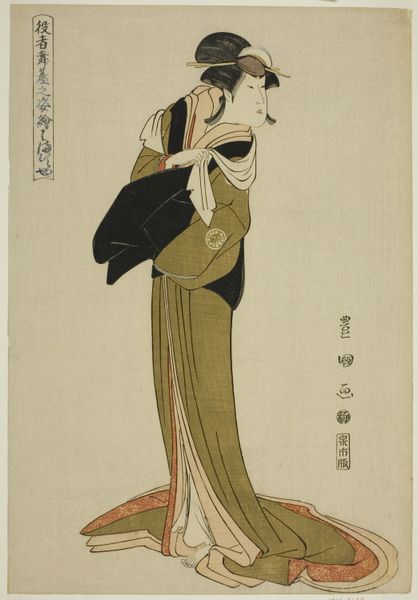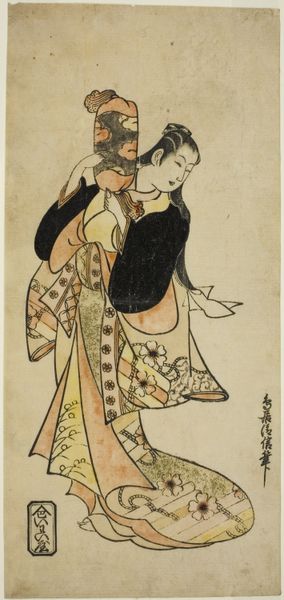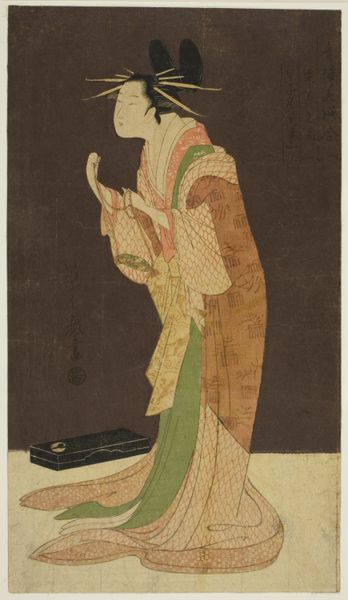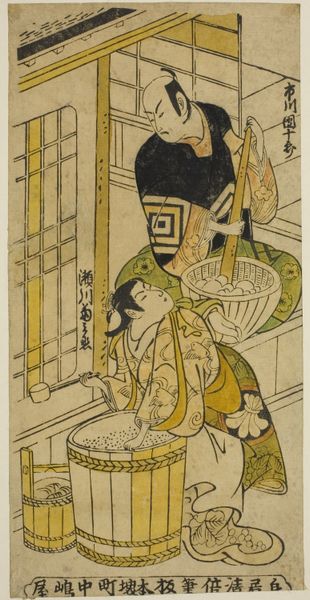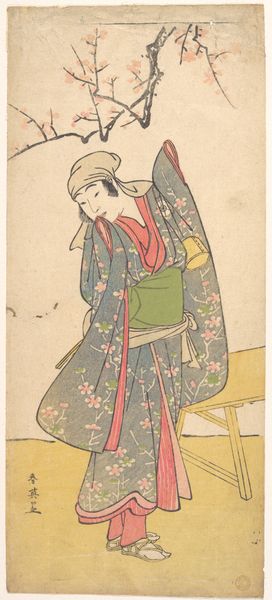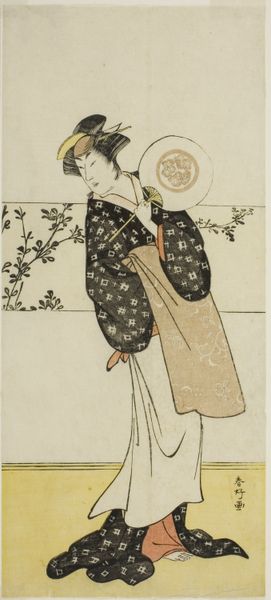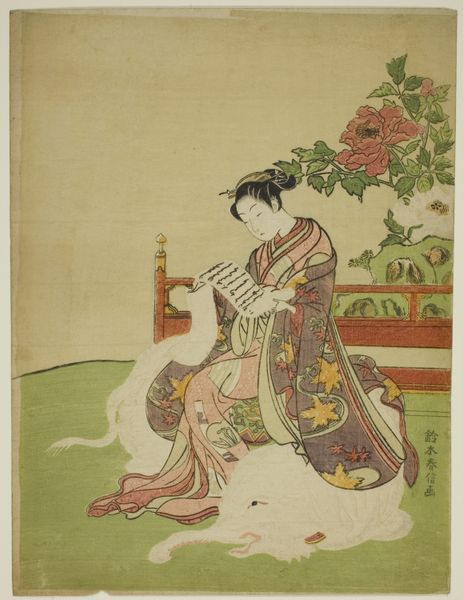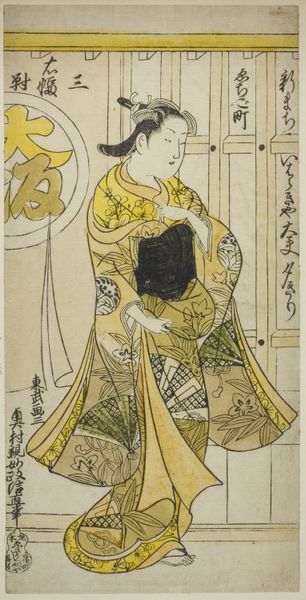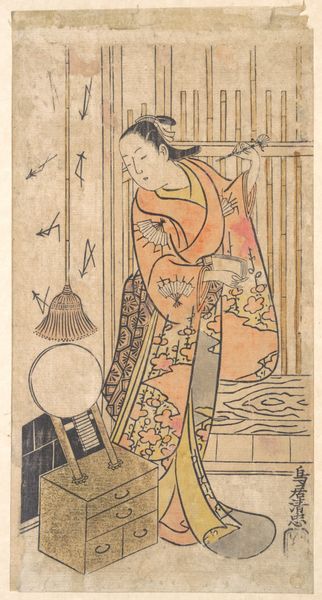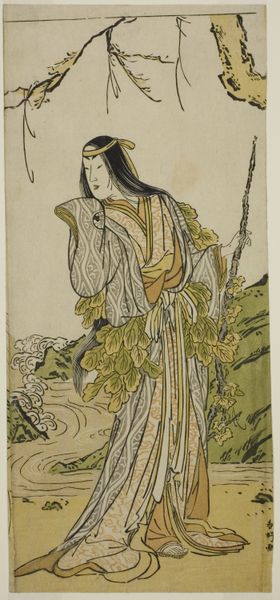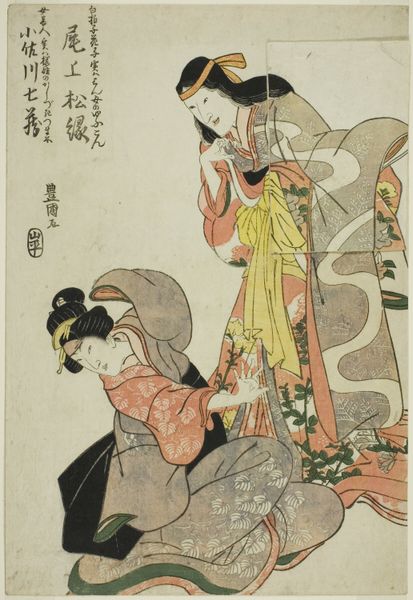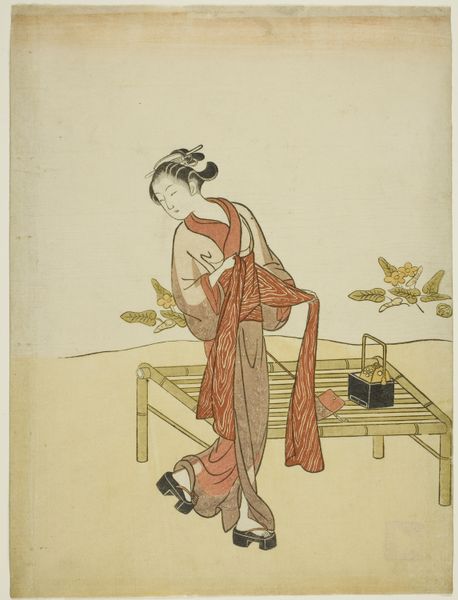
The Actor Sanogawa Mangiku I as Ohatsu in the play "Sogazaki Shinju," performed at the Nakamura Theater in the fourth month, 1719 1719
0:00
0:00
print, woodblock-print
#
portrait
# print
#
asian-art
#
ukiyo-e
#
woodblock-print
Dimensions: 30.3 × 15.2 cm
Copyright: Public Domain
Curator: Here, we see "The Actor Sanogawa Mangiku I as Ohatsu in the play Sogazaki Shinju," a woodblock print from 1719 by Okumura Masanobu, housed right here at the Art Institute. Editor: What strikes me instantly is the sense of quiet sadness, a poignant stillness captured in the lines. She seems so burdened by her role, or maybe something more. Curator: Indeed. Masanobu captured a pivotal scene from a tragic love story, a lovers’ suicide play that gripped audiences at the Nakamura Theater. This print is more than a portrait, it’s a document of fleeting performance and potent emotion. The wisteria, a symbol of fleeting love, almost seems to weep with her. Editor: It's the careful arrangement, too. That deliberate use of perspective. Note the slight tilt of her head and hands that creates an emotional pull. Also, the rectangular elements—the lantern, the brazier—are arranged like solid anchors, holding her, grounding her but also restricting movement. She is really caged in. Curator: The print style is key here. Ukiyo-e prints democratized art, making theater and celebrity accessible to the masses. Masanobu elevated the medium. Look at the precision, the line quality that evokes realism despite its stylized nature, from the intricate hair ornaments to the subtle fabric folds of her costume. And note the artist's early experimentation with urushi-e (lacquer print) to deepen blacks in the figure's robes. Editor: Also, the colours, that peachy robe contrasting with that inky black kimono trimmed in yellow. There is great sophistication in the orchestration. This is why I love formal analysis; it illuminates the visual structure upon which meaning is built, you know. What does this print communicate today? Curator: It speaks to enduring human themes. Love, loss, performance... and also the cultural power of the actor. To capture the fleeting essence of emotion in a piece of wood, nearly three hundred years on is wonderful and fascinating. This portrait becomes a gateway. Editor: So we end our journey richer, and full of hope in our common shared existence. I must admit, her melancholic stare will linger in my mind a while.
Comments
No comments
Be the first to comment and join the conversation on the ultimate creative platform.
